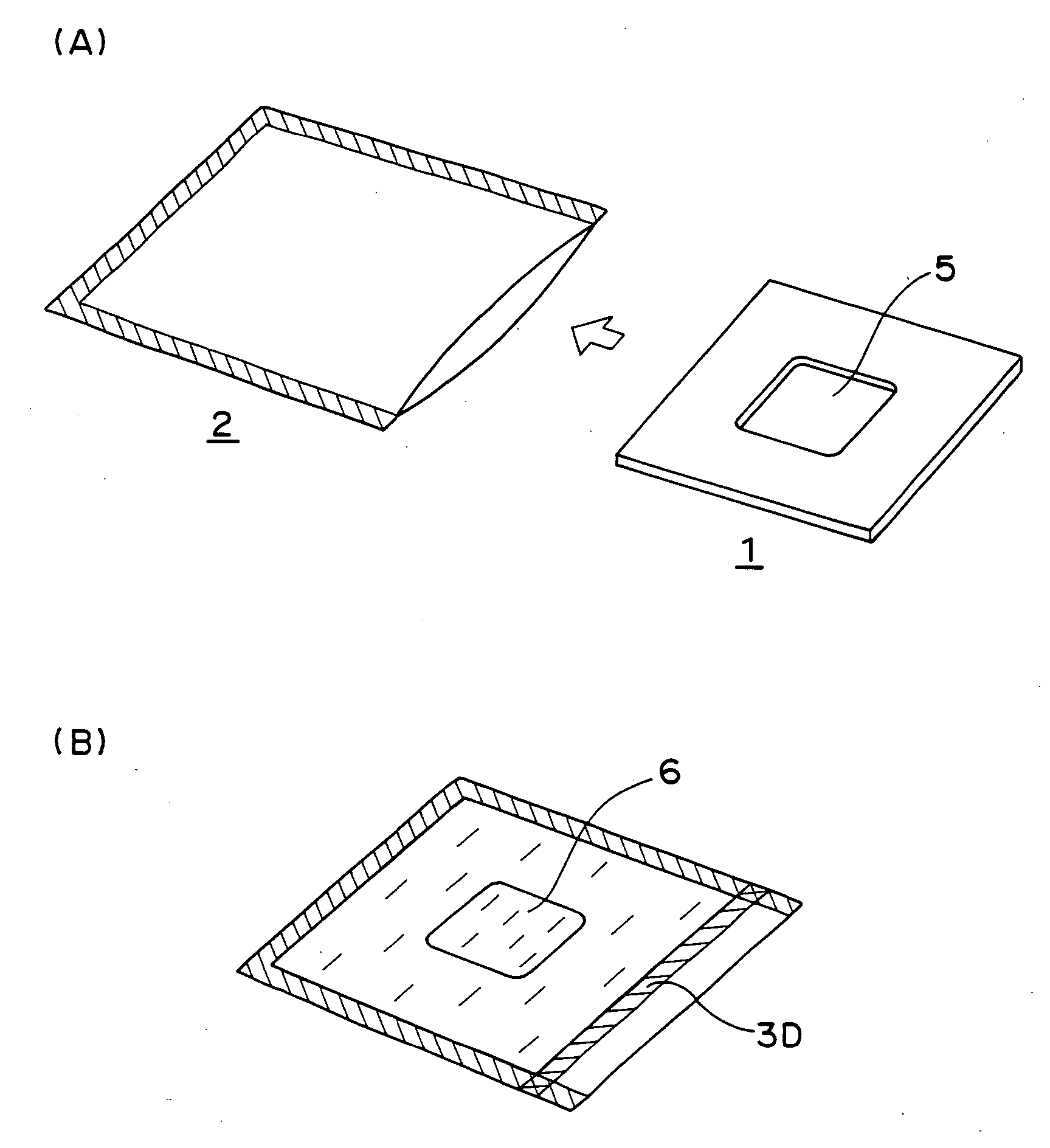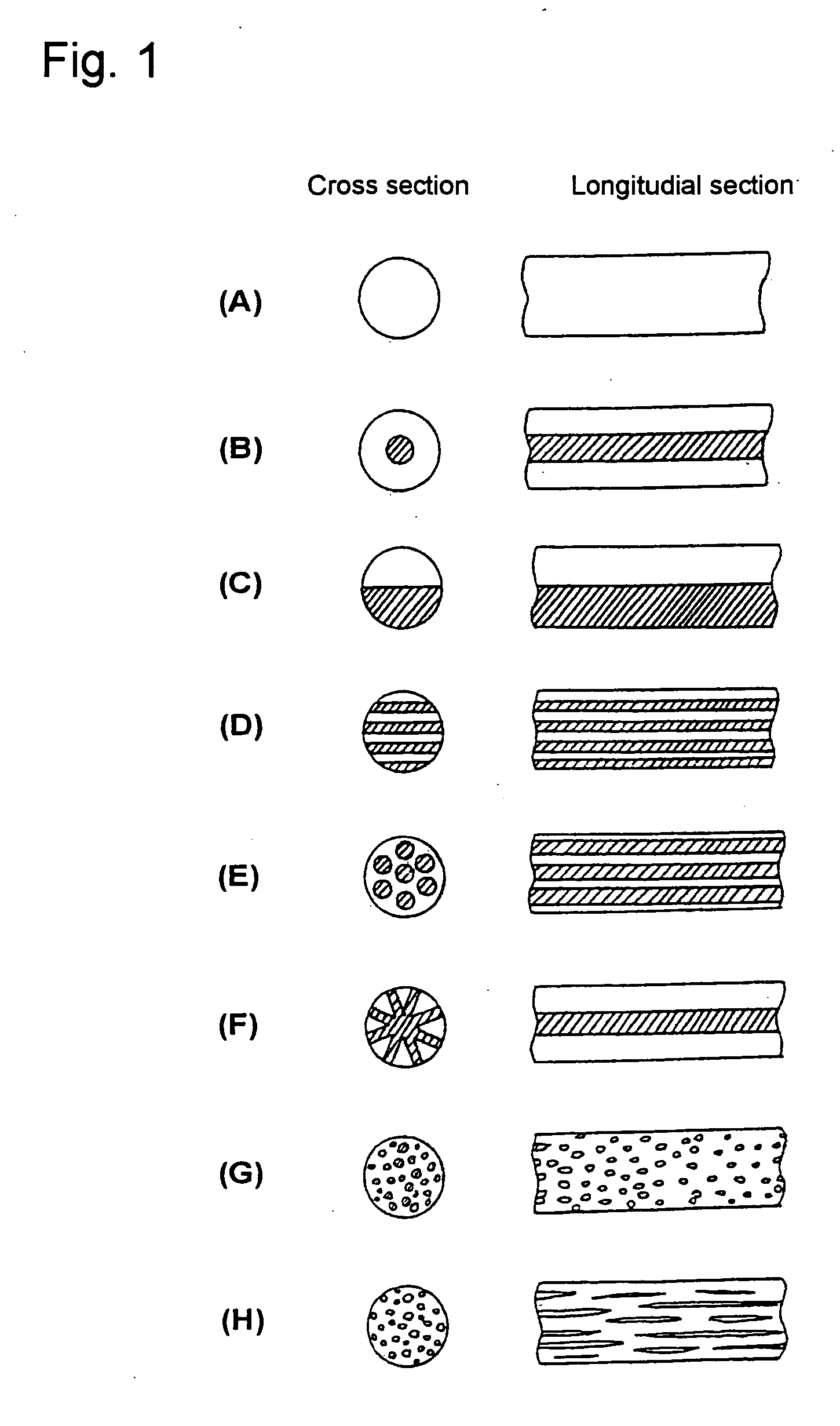Vacuum Heat Insulator
a vacuum heat insulation and core member technology, applied in the field of vacuum heat insulation, can solve the problems of common use core members of vacuum heat insulation described above, disadvantages in the handleability and workability of glass fiber itself, and insufficient heat resistance to fibrous materials such as glass fiber, etc., to achieve superior handleability and workability, reduce environmental load, and improve heat resistance.
- Summary
- Abstract
- Description
- Claims
- Application Information
AI Technical Summary
Benefits of technology
Problems solved by technology
Method used
Image
Examples
examples a
Fiber for Use as Core Member
[0152] The polyester fibers shown in Table 1 were used. The polyester fibers were polyethylene terephthalate fibers having a fiber length of 51 mm.
example a1
[0153] The polyester fiber shown in Table 1 was processed into sheet by a needle-punching method. The weight per unit area of the sheet immediately after processing was 550 g / m2. The sheet was cut into pieces of 200 mm×200 mm in size and dried at the temperature of 120° C. for 1 hour. After drying, four sheets were laminated, and the laminate was placed as a core member in an external packaging member of a gas barrier film having a four-layer structure of nylon, aluminum-deposited PET, aluminum foil, and high-density polyethylene, together with a gas-adsorbing member (COMBO, manufactured by Saes Getters Japan Co., Ltd). Then, the external packaging member was sealed by thermal fusion in a vacuum apparatus evacuated to an internal pressure of 0.01 Torr. The vacuum heat insulator obtained was 200 mm×200 mm in size and 10 mm in thickness. The density of the core member in the vacuum heat insulator obtained was 220 kg / m3.
[0154]
[0155] Vacuum heat insulators were prepared by a method sim...
examples b
Preparation of Gas-Adsorbing Member
Gas-Adsorbing Member A
[0164] Two sheets of PET nonwoven fabric having a weight per unit area of 50 g / m2 (dimension: 50 mm×100 mm) of a polyethylene terephthalate fiber having an average fiber size of 1.5 denier and an average fiber length of 51 mm were layered and sealed in three directions. Ten g of a gas-adsorbing substance was placed therein, and the opening was sealed, to give a gas-adsorbing member A.
[0165] Gas-Adsorbing Member B
[0166] A gas-adsorbing member B was prepared by a method similar to that for the gas-adsorbing member A, except that a PET nonwoven fabric having a weight per unit area of 60 g / m2 was used.
[0167] Gas-Adsorbing Member C
[0168] A gas-adsorbing member C was prepared by a method similar to that for the gas-adsorbing member A, except that a PET nonwoven fabric having a weight per unit area of 150 g / m2 was used.
[0169] Gas-Adsorbing Member D
[0170] Two sheets of a PP nonwoven fabric having a weight per unit area of 60 ...
PUM
| Property | Measurement | Unit |
|---|---|---|
| diameter | aaaaa | aaaaa |
| thickness | aaaaa | aaaaa |
| melting point | aaaaa | aaaaa |
Abstract
Description
Claims
Application Information
 Login to View More
Login to View More - R&D
- Intellectual Property
- Life Sciences
- Materials
- Tech Scout
- Unparalleled Data Quality
- Higher Quality Content
- 60% Fewer Hallucinations
Browse by: Latest US Patents, China's latest patents, Technical Efficacy Thesaurus, Application Domain, Technology Topic, Popular Technical Reports.
© 2025 PatSnap. All rights reserved.Legal|Privacy policy|Modern Slavery Act Transparency Statement|Sitemap|About US| Contact US: help@patsnap.com



